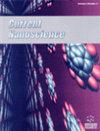从稻壳中提取碳化硅基材料
IF 1.5
4区 材料科学
Q4 BIOTECHNOLOGY & APPLIED MICROBIOLOGY
引用次数: 0
摘要
背景:稻壳是一种重要的农业废弃物,含有有机质和生物硅。虽然有些稻壳被用作燃料、动物食品、葡萄酒发酵的填充物和肥料,但大部分稻壳都作为农业废弃物被丢弃,对环境造成了极大的危害。将稻壳转化为碳化硅(SiC)基材料,满足了固体废弃物再利用的需求。方法:文章回顾了稻壳制碳化硅基材料的最新进展和专利。还分析了稻壳碳化硅基材料可能的发展方向。结果:在温度为 1200-1800 ℃、反应时间为 0.5-8 h 的条件下,利用稻壳的高温碳热还原反应可以制备出不同形貌的 SiC 材料,包括微米级和纳米级颗粒、纳米级晶须和纳米线。以稻壳为主要原料,在 800-1800 ℃下可制备出 SiC 基复合材料,包括 SiC 纳米线/C、Al/SiC、SiC/Si3N4 和 SiC/Al2O3。SiC 基材料在吸附剂、光学器件、机械产品、光催化剂、半导体和锂离子电池等领域具有巨大的应用潜力。结论从稻壳中低成本制备 SiC 基材料,并将其与不同成分相结合,探索新的应用领域,是未来的重要研究方向。本文章由计算机程序翻译,如有差异,请以英文原文为准。
Silicon Carbide-based Materials from Rice Husk
Background: Rice husk is an important agricultural waste that contains organic mass and bio-silica. Although some rice husks have been used as fuel, animal food, filler for wine fermentation, and fertilizer, the majority are discarded as agricultural waste, which does great harm to the environment. The conversion of rice husk to silicon carbide (SiC)-based materials satisfies the demand for the reutilization of solid wastes. Methods: The article reviews recent progress and patents on the SiC-based materials from rice husk. The possible development directions of the SiC-based materials from rice husks are also analyzed. Results: SiC materials with different morphologies, including microscale and nanoscale particles, nanoscale whiskers, and nanowires, can be prepared by high-temperature carbothermal reduction reaction from rice husk at the temperature of 1200-1800 °C, reaction time of 0.5-8 h, respectively. SiC-based composites, including SiC nanowires/C, Al/SiC, SiC/Si3N4, and SiC/Al2O3, can be obtained using rice husk as main source materials at 800-1800 °C. SiC-based materials exhibit great application potential in the fields of absorbents, optical devices, mechanical products, photocatalysts, semiconductors, and Li-ion batteries. Conclusion: The low cost of preparing SiC-based materials from rice husk, combining them with different compositions, and exploring new applications are important research directions in the future.
求助全文
通过发布文献求助,成功后即可免费获取论文全文。
去求助
来源期刊

Current Nanoscience
工程技术-材料科学:综合
CiteScore
3.50
自引率
6.70%
发文量
83
审稿时长
4.4 months
期刊介绍:
Current Nanoscience publishes (a) Authoritative/Mini Reviews, and (b) Original Research and Highlights written by experts covering the most recent advances in nanoscience and nanotechnology. All aspects of the field are represented including nano-structures, nano-bubbles, nano-droplets and nanofluids. Applications of nanoscience in physics, material science, chemistry, synthesis, environmental science, electronics, biomedical nanotechnology, biomedical engineering, biotechnology, medicine and pharmaceuticals are also covered. The journal is essential to all researches involved in nanoscience and its applied and fundamental areas of science, chemistry, physics, material science, engineering and medicine.
Current Nanoscience also welcomes submissions on the following topics of Nanoscience and Nanotechnology:
Nanoelectronics and photonics
Advanced Nanomaterials
Nanofabrication and measurement
Nanobiotechnology and nanomedicine
Nanotechnology for energy
Sensors and actuator
Computational nanoscience and technology.
 求助内容:
求助内容: 应助结果提醒方式:
应助结果提醒方式:


